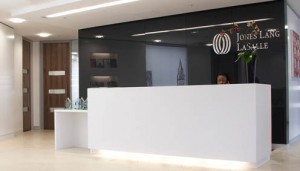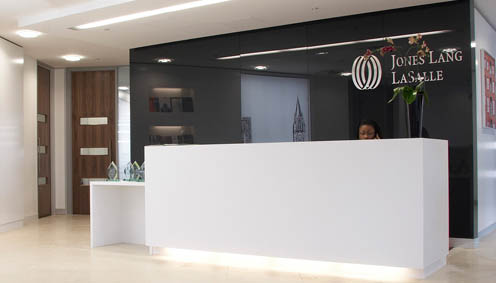 Jones Lang LaSalle’s second quarter 2011 Global Market Perspective, which assesses the impact of economic forces on the world’s major real estate markets, predicts this year will be the strongest performance and real estate trade volume since the market height of 2007.
Jones Lang LaSalle’s second quarter 2011 Global Market Perspective, which assesses the impact of economic forces on the world’s major real estate markets, predicts this year will be the strongest performance and real estate trade volume since the market height of 2007.
There are positive indicators visible across the global real estate markets; Arthur de Haast, Head of the International Capital Group at Jones Lang LaSalle commented: “The world’s major real estate markets started the year on a positive note and as we enter the second quarter these markets are continuing on their recovery path. Markets are showing remarkable resilience, despite the shocks of the disaster in Japan, the turmoil in the Middle East and a slightly less optimistic outlook for the global economy. The continuing global real estate recovery is characterised by strengthening investment markets, increasing corporate optimism and robust price growth for prime assets across multiple markets.”
The BRIC (Brazil, Russia, India and China) nations have continued to grow in importance to the real estate capital markets. These countries, which accounted for two percent of investment trades in 2007, are accounting for a greater proportion of transactions – 13 percent of global volumes in first quarter 2011. This places the BRICs nations, as a group, third after only the United States and the United Kingdom. The BRIC contribution to overall investment volumes is expected to rise further as transparency and the quality of the available supply of real estate stock improves.
Brazil is the main growth story over the last quarter. The country became the fifth most active investment market in Q1, overtaking China, as domestic demand drove activity during the quarter. São Paulo has one of the world’s most dynamic office markets, characterised by rapid rental growth, strong corporate occupier demand, low vacancy and a development boom.
Other key highlights of the Q2 2011 Global Market Perspective Report from Jones Lang LaSalle include:
Investment Volumes: global direct commercial real estate investment volumes are up 44 percent year-on-year. Based on current momentum and transactions in the pipeline, Jones Lang LaSalle believes that full-year volumes are now on track to be above US$440 billion, which would represent 35-40% growth on 2010 levels and the highest volume since 2007.
Paul Guest, Head of Global Capital Markets Research at Jones Lang LaSalle commented: “Investors are continuing to focus on core assets in the main gateway cities, but with insufficient supply, they are selectively moving up the risk curve in terms of geography and type of investment. For example we have seen more investors looking at prime assets in Central and Eastern Europe and at opportunistic opportunities in Asia, particularly Poland and China, respectively. Investors are also more prepared to consider smaller assets, properties with shorter income streams or with some vacancy, as well as selective development opportunities. Most investors however, are not prepared to compromise on quality and continue to show caution towards secondary assets.”
In the United States, there has been a significant easing of the debt situation, liquidity is building and the CMBS market is returning. In Asia Pacific, loan-to-value ratios are now around the 60 to 65% range with an increasing choice of both financing options and parties from whom to obtain debt. In Europe, debt still remains difficult however, especially for non-prime assets.
Capital values for prime office assets in major cities rose by 22 percent over the past year. In several markets, prime yields are now approaching the levels reached during the previous cycle’s peak in 2007. Nonetheless, prime yields are now stabilising after the steep re-pricing trend of the past 18 months. Future capital appreciation will be increasingly driven by rental growth; for investors the key to securing capital growth will be a deep understanding of the motivations of corporate occupiers and an ability to offer competitive space which meets occupier requirements.
Corporate occupier confidence is on the up across the globe and we are seeing more expansion demand. Corporations are focusing on ‘smart growth’ however, looking to minimise exposure to rising costs by continually ‘stress testing’ the need to take new space. Asia Pacific continues to have some of the world’s strongest office leasing markets, with Hong Kong and Singapore leading the way globally with year-on-year rental growth of over 30%.
This steady occupier demand combined with an emerging supply gap for prime assets in many CBD markets in major cities is resulting in a gradual fall in the global office vacancy rate, which currently stands at 14.2 percent. As landlords become more confident, we are seeing rising volumes of speculative construction in Europe, led by Moscow, Paris and London. In the United States however, speculative construction still remains largely dormant. Meanwhile, Asia Pacific is at the peak of its development cycle, but corporate demand in most markets is strong enough to absorb the additional new office space.
As a result of this declining vacancy rate and limited supply, rental growth for prime assets is accelerating, and is currently at close to eight percent year-on-year across 22 major global office markets. Jones Lang LaSalle anticipates that more markets will turn in favour of landlords during the remainder of 2011.





